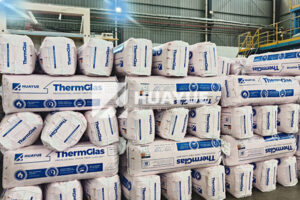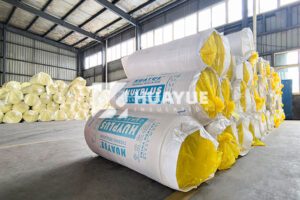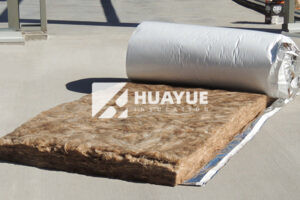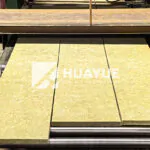What is glass wool?
Glass wool is changing the way we insulate our buildings, but how does it actually work and why are so many companies choosing it?
Glass wool is a man-made material produced by HUAYUE using natural ores like quartz sand, limestone, and dolomite, which are melted together and spun into fine fibers. These fibers form a light, wool-like texture and are packed into blankets, boards, or batts. Glass wool is known for excellent heat insulation, fire resistance, and sound absorption, making it a top choice in modern construction.
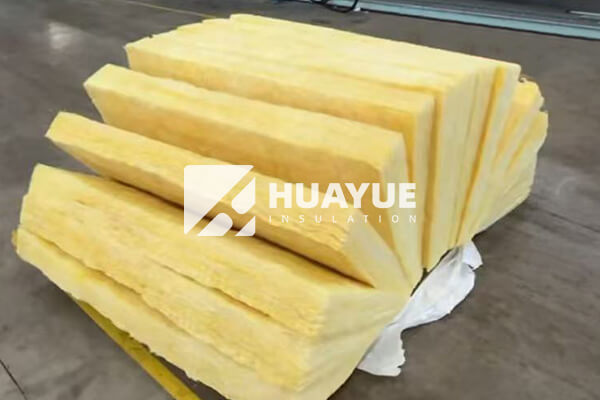
Many people have seen glass wool used in walls or ceilings. Let’s look closer at how this remarkable material keeps buildings safe, comfortable, and energy-efficient.
Why is glass wool such an effective insulation material?
Glass wool keeps heat from passing through walls, making buildings comfortable and saving energy, but what exactly makes its insulation so dependable?
Glass wool’s structure contains millions of tiny air pockets trapped inside fine glass fibers, resulting in very low thermal conductivity. This means heat does not flow easily from one side of a wall to the other. With less heat transfer, rooms stay warmer in winter and cooler in summer, resulting in less energy spent on heating or cooling. HUAYUE glass wool is also non-combustible, so it will not add to the spread of fire in a building. It does not melt or emit harmful fumes even at high temperatures.
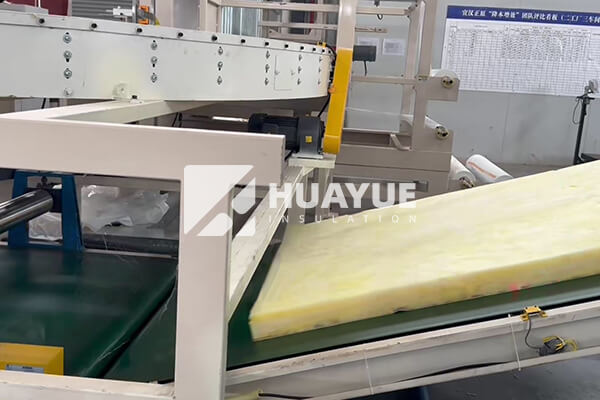
Let’s explore why these characteristics make glass wool insulation the best choice for a range of building projects.
How does low thermal conductivity benefit building insulation?
| Feature | Effect on Insulation | Benefit to Buildings |
|---|---|---|
| Low thermal conductivity | Reduces heat transfer | Keeps rooms at set temperature longer |
| Millions of air pockets | Trap heat and sound | Improves energy efficiency and acoustic comfort |
Glass wool’s tiny glass fibers are spun so closely that air gets trapped between them. Air itself is a poor conductor of heat, so when these pockets are locked in, heat cannot pass from one side of the insulation to the other. When HUAYUE glass wool is installed in a wall or roof, the interior temperature becomes much easier to control. Less heating or cooling is needed, making the whole building more energy efficient. Because it does not catch fire, it also increases safety. That is why many architects and engineers recommend glass wool for residential, commercial, and industrial buildings.
Can you touch glass wool?
HUAYUE glass wool is safe to use in any building, but is it safe to handle with bare hands?
Direct contact with glass wool should be avoided. Its fine, light fibers can irritate your skin if you touch them without gloves. These fibers are not dangerous but may feel uncomfortable, so always use gloves, a mask, and long sleeves during handling or installation.
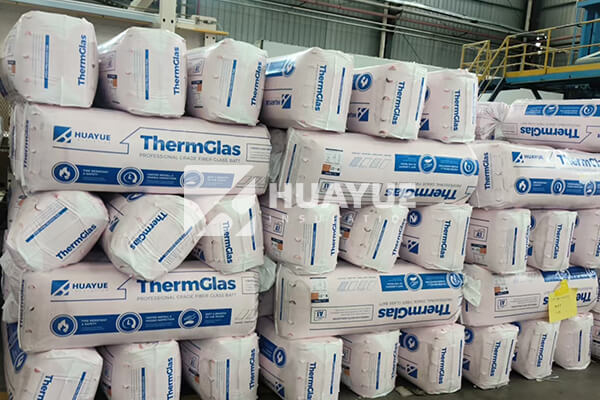
Now, let’s go deeper into why personal protection is important when handling glass wool and what you can do to stay safe.
What precautions should you take when installing glass wool?
| Risk | Protective Equipment Needed | Why It Helps |
|---|---|---|
| Skin irritation | Gloves, long sleeves | Prevents fibers from touching skin |
| Eye irritation | Safety goggles | Stops fibers from entering eyes |
| Respiratory irritation | Mask or respirator | Blocks fibers from being inhaled |
While HUAYUE glass wool does not pose any danger after being installed, handling it during installation can release tiny fibers into the air. These fibers can irritate the skin if touched and may cause minor discomfort to the eyes and nose. Wearing gloves and protective clothing reduces this risk, and a mask or respirator can keep the fibers from being inhaled. When the insulation work is finished and everything is sealed inside the walls, there is no ongoing health risk—just a safe, comfortable living or working space. That’s why professionals are always careful during installation but trust glass wool in the long run.
What characteristics make glass wool unique?
Glass wool from HUAYUE is known for more than just good insulation. Does it have other advantages that set it apart?
Glass wool is fire-resistant, sound-absorbing, and versatile. It does not burn, it dampens sound vibrations, and it can be shaped into rolls, boards, or batts for universal application.
Let’s break down these special characteristics and see how they add value in factories, homes, and offices.
Key characteristics of HUAYUE glass wool
| Characteristic | Benefit | Example Applications |
|---|---|---|
| Fire resistance | Safe against fire spread | Walls, ceilings, industrial tanks |
| Sound absorption | Quiet, comfortable space | Studios, offices, homes |
| Versatile forms | Fits all building designs | Roofs, floors, ducts, piping |
| Sustainability | Can be recycled and reused | Green building projects |
Fire resistance comes from glass wool’s inorganic glass fibers. This means it will not burn in a fire. In fact, HUAYUE glass wool can help contain flames, acting as a barrier that slows the spread of fire. The same fibers also dampen sound, making buildings quieter by reducing noise transmission between rooms. Since glass wool can be made into rolls, slabs, or loose fill, it works for many different parts of a building—from insulating roofs and walls to filling gaps around pipes or tanks. HUAYUE’s products are also recyclable, making them a good choice for projects focused on sustainability and energy saving. All these unique strengths combine to make glass wool a top pick for safe, comfortable, and efficient buildings.
Conclusion
Glass wool from HUAYUE is reliable, safe, and versatile; its thermal performance, fire resistance, and sustainability make it a leading choice for modern insulation.
You may also be interested in:
Ready to Get Started?
Get in touch with our experts for personalized solutions tailored to your needs.
Get Free QuoteLatest Articles

Glass Wool Fire Rating: How Safe Is Your Insulation?
Dec 25, 2025
Let's Work Together
Ready to take your business to the next level? Get in touch with our team of experts and let's discuss how we can help you achieve your goals.
Get Free Solutions
